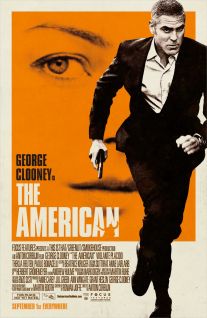 By some measure the most intense 105 minutes I’ve spent in a cinema this year, Darren Aronofsky’s Black Swan is a melodramatic psychological horror that plunges the viewer into the disintegrating mind of a young woman.
By some measure the most intense 105 minutes I’ve spent in a cinema this year, Darren Aronofsky’s Black Swan is a melodramatic psychological horror that plunges the viewer into the disintegrating mind of a young woman. Natalie Portman stars as Nina, a driven ballerina whose major career break – the chance to perform the dual roles of the White and Black Swans in Swan Lake – places an intolerable strain on her psyche.
Early on, the company director Thomas Leroy (Vincent Cassell) helpfully explains the plot of Swan Lake for us, dwelling on the conflict between the good White Swan and her evil lustful twin, the Black Swan. Leroy has no doubt that Natalie is up to the role of the White Swan, but doubts she can embody the wilder, sensuous Black. But he nevertheless decides to give her a chance at the role. She continues to struggle: she constantly strives for perfection, but her idea of perfection is a purely technical one that doesn’t help her inhabit both roles. Egged on by her controlling mother, whose own dance career was cut short when Nina was conceived, Nina clearly has long-term issues with self harm (she scratches herself obsessively, and it’s safe to add anorexia into the mix). She also starts to feel increasingly threatened by Lily, a rival dancer who is… well, more of a Black Swan type.
The plot could have come from a 60s B movie; indeed, I couldn’t shake the idea that a version of the same script made 40 – 50 years earlier would have had Roger Corman and Vincent Price’s names in the credits (though whether Price would have been in the Cassell or Portman role is a question I couldn’t quite resolve). But the execution is another matter. I haven’t seen an Aronofsky film since Pi – not that I’ve particularly tried to avoid his stuff, it’s just sort of happened – so I can’t say if Black Swan is representative of his work (he states in the LFF catalogue that he sees it as a companion piece to The Wrestler, both films being about performers who use their bodies to express their souls). It’s certainly not an easy watch. Not only do we see the appalling punishment to which ballet dancers subject their feet (you want to beg them to take up a safer career, like maybe boxing, or juggling chainsaws while blindfold) but as Nina starts to hallucinate, various nasty things happen to nails in close up. I haven’t had to look away from the screen so often since Saw III.
What the film does brilliantly is oblige us to share Nina’s increasingly shaky grip on reality. It starts early on as Nina glimpses someone on the subway train who appears to be her double; we later discover that this is Lily, who gets off at the wrong stop on her way to her first rehearsal, but we – like Nina – are rattled already. The doppelganger theme continues as Nina feels under attack variously from Lily – who may or may not be seeking to replace her – but from an apparently imaginary double. It’s normally easy to spot which scenes in a film are real (in the context of the narrative) and which are fake. It’s less so in this one.
What really anchors the film is Natalie Portman as Nina; she is superb, and a sure bet for an Oscar nomination. A less committed performance would have sunk the film, leaving us laughing as the plot, and the imagery, becomes ever more hysterical. Portman is absolutely believable as the controlled, repressed, heartbreakingly fragile Nina. Aronofsky’s visual and audio tricks take the film into the realm of madness; his star keeps it firmly believable.
Black Swan is probably not for everyone, and may well be a love it or hate it film. I thought it was amazing, and would absolutely urge anyone interested to see it in a cinema for the most immersive experience possible.



